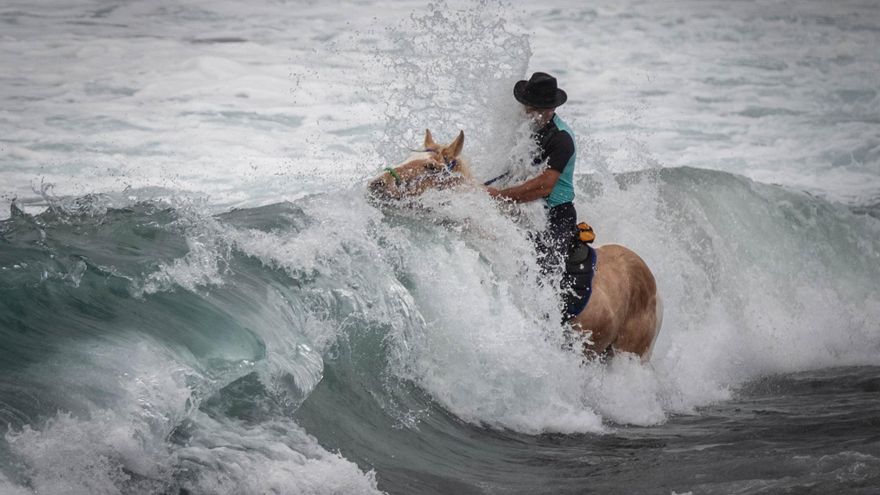
On January 20, Adeje commemorates one of the longstanding festivities in Tenerife, San Sebastián, a celebration originating from the 17th century, held at a sacred site established before the conquest: the bathing of horses (over a hundred this time) in the waters of Adeje. This unrepeatable event attracted thousands who gathered at La Caleta to witness both the liturgical service and the blessing of animals following the procession along La Enramada beach.
The significant day’s activities commenced at 12:00 in the parish of San Sebastián, with the beach of La Enramada becoming a hub of community festivities, where countless individuals converged around a shared theme: San Sebastián,” stated the mayor of the locality, José Miguel Rodríguez Fraga. He described the occasion as one that “connects the Guanche cultures with those of the conquistadors.”
“This festival intertwines with the various nationalities that currently inhabit this space, celebrating alongside us.”
José Miguel Rodríguez Fraga
— Mayor of Adeje
The mayor highlighted that “this location has always held significance” because of its water source. January 20 “is a deeply meaningful day for all residents of the South, rich in anthropological and historical context,” argued Rodríguez Fraga, who believes “This celebration forms an integral part of our identity, both personally and collectively.” Furthermore, it reflects “the blend of diverse nationalities that today share this space and this festive occasion, emphasising the vibrant and rich aspects of our heritage.”
Alongside more than one hundred horses, this year’s event saw the inclusion of goats, sheep, dogs, donkeys, camels, ponies, and birds, all accompanied by their owners and cared for in accordance with animal welfare standards.
The highlight of the event
The tradition of the horse riders entering the sea, one of the most eagerly awaited moments, occurred under the watchful eye of lifeguards, police, and medical staff. Following this heartfelt action, the image of San Sebastián was escorted to El Humilladero and subsequently to the square named after him, where the animals were blessed.
The organisers arranged separate areas to ensure that the larger animals remained in comfortable conditions, shaded and with plenty of water. Additionally, veterinary teams were present throughout the celebration to maintain the well-being of the animals at all times. This year, as per tradition, there were food stalls managed by diverse festival committees from the Adeje neighbourhoods, as well as culinary offerings from long-standing bars and restaurants in Adeje.
The overall atmosphere was one of coexistence and serenity. Various garden spaces were set up to allow participants to enjoy the festivities, with families, groups, friends, and individuals of all ages, backgrounds, and cultures coming together. As has been customary, typical foods and sweets were available at stalls near the square.
This year, the Mirador de La Paloma emerged as a particularly favoured site to observe the talents of horses and their riders at sea. Notably, the Adeje City Council once again made provisions for individuals with reduced mobility and/or disabilities, ensuring visibility and accessibility for everyone.
Safety arrangements
The Adeje City Council commended the public’s behaviour, reporting no significant incidents and applauding their responsible management of pets.















